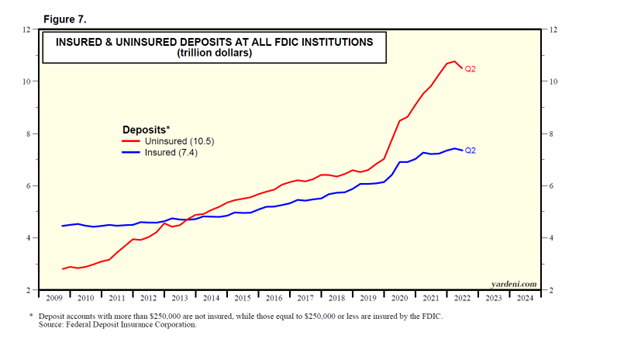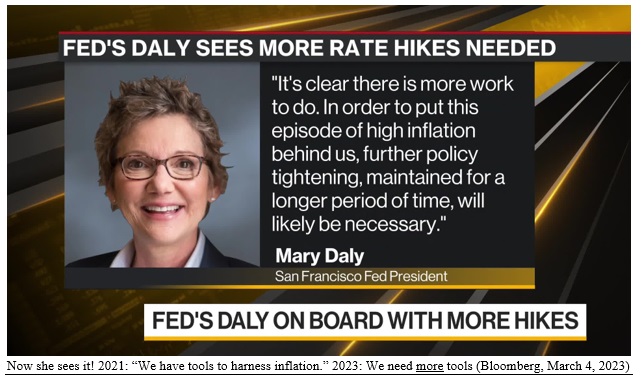by Gary Alexander
March 28, 2023
Inflation can kill an economy and bring down kings, queens, or presidents – as well as fuel the rise of Hitler in Germany a century ago. Thankfully, America was scarred at birth by inflation, in the Revolution.
If you compare the French and American Revolutions (bear with me), you can see the difference between sound money principles and inflationary gimmicks. The French Royalty overspent lavishly, far more than any other royalty of the day. Louis XVI had 4,000 household servants, including 30 to serve dinner, 128 musicians, 48 personal doctors, and 198 just to “care for his body.” The bills were outrageously high. The resulting deficits and inflation caused poverty for the masses – one major cause for the 1789 Revolution.
When the peasants couldn’t afford bread, Marie-Antoinette reportedly quipped, “Let them eat cake.” But when the revolutionary National Assembly took over France, they didn’t learn from the royal experience. They issued a new inflationary currency, called the Assignat. By late 1791, 1.5 billion assignats were in circulation, then 4.1 billion by 1793, and 19.7 billion by 1795, with a 99% decrease in purchasing power.
All this led to Napoleon taking over and then 20 years of costly wars all over Europe….and into Russia.

America was a big beneficiary of French inflation, buying the Louisiana Purchase for just $15 million.
By contrast, the American Revolution against the British Crown pitted us against a nation with a strong currency against our weak “Continental,” a cardboard cutout currency that quickly lost its value, like the French Assignat. General Washington complained that a “wagonload of currency can’t buy a wagonload of provisions.” That’s why, after the Revolutionary War, our 1787 Constitution said that states could not mint any other currency but gold and silver coinage, and the Coinage Act of 1792 made gold and silver backing a national law, so the dollar was strong for over 120 years, until the birth of the Federal Reserve.
By 1958, France was on its Fifth Republic and relatively weak. We’re still on our first Republic and are still a Superpower. The lesson is: To keep a currency strong, don’t seek out 2% inflation. Strive for 0%.
Seven Flags Over the San Francisco Fed
Last week, I wrote about the Fed flooding the nation with trillions of dollars in 2020, then striving to get inflation UP to 2% in 2021, then when it overshot that mark by double, then triple, they said during all of 2021 that this high inflation was “transitory,” and then they waited a full year after inflation hit 4% before they raised rates, rapidly, and they waited even longer to end QE and to start any quantitative tightening.
We’re now three weeks past the “sell by” date on Silicon Valley Bank, so we’ve had time to craft an autopsy on what went wrong. There were at least seven red or yellow flags flying over SVB, all pointing to the lax supervisory focus of the San Francisco Federal Reserve, with its Board focusing on other issues.
- At the end of 2022, 97% of SVB’s deposits were above the $250,000 (uninsured) limit. The national average is under 60%. Why didn’t the regulators notice this as a potential red flag?
- A lion’s share of the bank’s depositors were in the technology sector, which was a particularly hard-hit S&P sector in 2022. Specifically, SVB claims to have backed nearly half of all U.S. venture-backed tech and health-care startups with a bias toward ESG, at one time bragging of working with 1,550 startups in “climate technology,” a clear red flag of over-concentration.
- Deposits were pouring in at a record rate. From the start of 2020 to the first quarter of 2022, the bank’s deposits more than tripled to $198 billion. The stock price also soared – up 40% in January 2023 alone. Such rapid growth is unusual for a bank, a “yellow flag,” at least.
- The bank deposited most of this money in long-term bonds seeking high yield instead of safer (short-term) securities, but long-term bonds will fall in price long before their redemption date.
- The bank operated without a “chief risk officer” (CRO) for nine months, the critical nine months after the Fed began raising rates at the fastest pace in history – when they needed a risk officer.
- SVB placed 57% of its assets in mortgage-backed securities vs. the national average for banks of 24%, at a time when mortgage rates were rising and their values fell, a highly risky position.
- SVB CEO Greg Becker also served on the San Francisco Federal Reserve Board, a conflict of interest. Days before SVB collapsed, he sold $3.6 million of his SVB shares and fled to Hawaii.
Regulators had plenty of time to spot these excesses in one of the largest banks in their district, but some of these excesses harmonized with the SF Fed’s own biases for ESG dreamers and money-losing startups. In other words, some of these faults were perceived as virtues, at least in the Bay area’s moral landscape.
The Wall Street Journal said SVB was beloved for offering banking services to startups that often weren’t profitable and, in some cases, “didn’t have a product, and would otherwise have a hard time getting a line of credit or a loan from a larger bank.” Robin Hood investing: Borrow from the rich to loan to the poor.
One tech entrepreneur was more candid: “They’re basically subprime business loans. You’re talking about companies that have no credit profile, they’re burning cash … It was basically social credit.”
Depositors also need to be more careful: FDIC data show that since the end of the 2008-09 financial crisis (Q3’09), insured deposits of all financial intermediaries rose 64%, but uninsured deposits rose 275% from $2.8 trillion to $10.5 trillion. The portion of uninsured rose from 39% of total deposits to 59% (see chart).

Graphs are for illustrative and discussion purposes only. Please read important disclosures at the end of this commentary.
Today’s blindness to financial reality (especially in the San Francisco district) amounts to a slap in the face at depositors and bankers alike, akin to that other Marie’s “Let them eat cake.” Let them eat years of high inflation, an inverted yield curve (poison to banks), losing money in long-term bonds as long-term rates rise, a plunging real estate market (hurting minorities the most), eventually causing a panic run on some troubled large and regional banks, fueling big rallies in bitcoins and gold as alternatives to banks.
In 2021, when Mary Daly told Barron’s, “We have the tools to bring down inflation,” you’re feeling those tools in action – high and rising interest rates and quantitative tightening – from $120 billion per month in new money to $95 billion per month less, a $215 billion per month ($2.58 trillion/year) swing in liquidity.

Today’s high inflation is due to Daly’s (and others’) push to force inflation UP to 2% in 2021 by quantitative easing and super-low rates for too long, combined with over-aggressive stimulus spending.
It’s all contained for now, thanks to promises of massive bailouts, but that translates into more money creation, which means more inflation down the road – and more of the Fed’s “tools to fight inflation.”
Let them eat “further policy tightening maintained for a longer period of time.” – Mary Daly, March 2023
Navellier & Associates Inc. does not own Silicon Valley Bank (SVB), in managed accounts. Gary Alexander does not personally own Silicon Valley Bank (SVB).
All content above represents the opinion of Gary Alexander of Navellier & Associates, Inc.
Also In This Issue
A Look Ahead by Louis Navellier
Janet Yellen Undermines Powell’s Positive Message
Income Mail by Bryan Perry
The FASB, Treasury, and Federal Reserve Caused this Banking Crisis
Growth Mail by Gary Alexander
“Let Them Eat Quantitative Tightening”
Global Mail by Ivan Martchev
“Jean-Claude” Powell and Janet “Trichet” Spook the Markets
Sector Spotlight by Jason Bodner
Sensing Market Earthquakes or Tsunamis in Advance
View Full Archive
Read Past Issues Here
About The Author

Gary Alexander
SENIOR EDITOR
Gary Alexander has been Senior Writer at Navellier since 2009. He edits Navellier’s weekly Marketmail and writes a weekly Growth Mail column, in which he uses market history to support the case for growth stocks. For the previous 20 years before joining Navellier, he was Senior Executive Editor at InvestorPlace Media (formerly Phillips Publishing), where he worked with several leading investment analysts, including Louis Navellier (since 1997), helping launch Louis Navellier’s Blue Chip Growth and Global Growth newsletters.
Prior to that, Gary edited Wealth Magazine and Gold Newsletter and wrote various investment research reports for Jefferson Financial in New Orleans in the 1980s. He began his financial newsletter career with KCI Communications in 1980, where he served as consulting editor for Personal Finance newsletter while serving as general manager of KCI’s Alexandria House book division. Before that, he covered the economics beat for news magazines. All content of “Growth Mail” represents the opinion of Gary Alexander
Important Disclosures:
Although information in these reports has been obtained from and is based upon sources that Navellier believes to be reliable, Navellier does not guarantee its accuracy and it may be incomplete or condensed. All opinions and estimates constitute Navellier’s judgment as of the date the report was created and are subject to change without notice. These reports are for informational purposes only and are not a solicitation for the purchase or sale of a security. Any decision to purchase securities mentioned in these reports must take into account existing public information on such securities or any registered prospectus.To the extent permitted by law, neither Navellier & Associates, Inc., nor any of its affiliates, agents, or service providers assumes any liability or responsibility nor owes any duty of care for any consequences of any person acting or refraining to act in reliance on the information contained in this communication or for any decision based on it.
Past performance is no indication of future results. Investment in securities involves significant risk and has the potential for partial or complete loss of funds invested. It should not be assumed that any securities recommendations made by Navellier. in the future will be profitable or equal the performance of securities made in this report. Dividend payments are not guaranteed. The amount of a dividend payment, if any, can vary over time and issuers may reduce dividends paid on securities in the event of a recession or adverse event affecting a specific industry or issuer.
None of the stock information, data, and company information presented herein constitutes a recommendation by Navellier or a solicitation to buy or sell any securities. Any specific securities identified and described do not represent all of the securities purchased, sold, or recommended for advisory clients. The holdings identified do not represent all of the securities purchased, sold, or recommended for advisory clients and the reader should not assume that investments in the securities identified and discussed were or will be profitable.
Information presented is general information that does not take into account your individual circumstances, financial situation, or needs, nor does it present a personalized recommendation to you. Individual stocks presented may not be suitable for every investor. Investment in securities involves significant risk and has the potential for partial or complete loss of funds invested. Investment in fixed income securities has the potential for the investment return and principal value of an investment to fluctuate so that an investor’s holdings, when redeemed, may be worth less than their original cost.
One cannot invest directly in an index. Index is unmanaged and index performance does not reflect deduction of fees, expenses, or taxes. Presentation of Index data does not reflect a belief by Navellier that any stock index constitutes an investment alternative to any Navellier equity strategy or is necessarily comparable to such strategies. Among the most important differences between the Indices and Navellier strategies are that the Navellier equity strategies may (1) incur material management fees, (2) concentrate its investments in relatively few stocks, industries, or sectors, (3) have significantly greater trading activity and related costs, and (4) be significantly more or less volatile than the Indices.
ETF Risk: We may invest in exchange traded funds (“ETFs”) and some of our investment strategies are generally fully invested in ETFs. Like traditional mutual funds, ETFs charge asset-based fees, but they generally do not charge initial sales charges or redemption fees and investors typically pay only customary brokerage fees to buy and sell ETF shares. The fees and costs charged by ETFs held in client accounts will not be deducted from the compensation the client pays Navellier. ETF prices can fluctuate up or down, and a client account could lose money investing in an ETF if the prices of the securities owned by the ETF go down. ETFs are subject to additional risks:
- ETF shares may trade above or below their net asset value;
- An active trading market for an ETF’s shares may not develop or be maintained;
- The value of an ETF may be more volatile than the underlying portfolio of securities the ETF is designed to track;
- The cost of owning shares of the ETF may exceed those a client would incur by directly investing in the underlying securities; and
- Trading of an ETF’s shares may be halted if the listing exchange’s officials deem it appropriate, the shares are delisted from the exchange, or the activation of market-wide “circuit breakers” (which are tied to large decreases in stock prices) halts stock trading generally.
Grader Disclosures: Investment in equity strategies involves substantial risk and has the potential for partial or complete loss of funds invested. The sample portfolio and any accompanying charts are for informational purposes only and are not to be construed as a solicitation to buy or sell any financial instrument and should not be relied upon as the sole factor in an investment making decision. As a matter of normal and important disclosures to you, as a potential investor, please consider the following: The performance presented is not based on any actual securities trading, portfolio, or accounts, and the reported performance of the A, B, C, D, and F portfolios (collectively the “model portfolios”) should be considered mere “paper” or pro forma performance results based on Navellier’s research.
Investors evaluating any of Navellier & Associates, Inc.’s, (or its affiliates’) Investment Products must not use any information presented here, including the performance figures of the model portfolios, in their evaluation of any Navellier Investment Products. Navellier Investment Products include the firm’s mutual funds and managed accounts. The model portfolios, charts, and other information presented do not represent actual funded trades and are not actual funded portfolios. There are material differences between Navellier Investment Products’ portfolios and the model portfolios, research, and performance figures presented here. The model portfolios and the research results (1) may contain stocks or ETFs that are illiquid and difficult to trade; (2) may contain stock or ETF holdings materially different from actual funded Navellier Investment Product portfolios; (3) include the reinvestment of all dividends and other earnings, estimated trading costs, commissions, or management fees; and, (4) may not reflect prices obtained in an actual funded Navellier Investment Product portfolio. For these and other reasons, the reported performances of model portfolios do not reflect the performance results of Navellier’s actually funded and traded Investment Products. In most cases, Navellier’s Investment Products have materially lower performance results than the performances of the model portfolios presented.
This report contains statements that are, or may be considered to be, forward-looking statements. All statements that are not historical facts, including statements about our beliefs or expectations, are “forward-looking statements” within the meaning of The U.S. Private Securities Litigation Reform Act of 1995. These statements may be identified by such forward-looking terminology as “expect,” “estimate,” “plan,” “intend,” “believe,” “anticipate,” “may,” “will,” “should,” “could,” “continue,” “project,” or similar statements or variations of such terms. Our forward-looking statements are based on a series of expectations, assumptions, and projections, are not guarantees of future results or performance, and involve substantial risks and uncertainty as described in Form ADV Part 2A of our filing with the Securities and Exchange Commission (SEC), which is available at www.adviserinfo.sec.gov or by requesting a copy by emailing info@navellier.com. All of our forward-looking statements are as of the date of this report only. We can give no assurance that such expectations or forward-looking statements will prove to be correct. Actual results may differ materially. You are urged to carefully consider all such factors.
FEDERAL TAX ADVICE DISCLAIMER: As required by U.S. Treasury Regulations, you are informed that, to the extent this presentation includes any federal tax advice, the presentation is not written by Navellier to be used, and cannot be used, for the purpose of avoiding federal tax penalties. Navellier does not advise on any income tax requirements or issues. Use of any information presented by Navellier is for general information only and does not represent tax advice either express or implied. You are encouraged to seek professional tax advice for income tax questions and assistance.
IMPORTANT NEWSLETTER DISCLOSURE:The hypothetical performance results for investment newsletters that are authored or edited by Louis Navellier, including Louis Navellier’s Growth Investor, Louis Navellier’s Breakthrough Stocks, Louis Navellier’s Accelerated Profits, and Louis Navellier’s Platinum Club, are not based on any actual securities trading, portfolio, or accounts, and the newsletters’ reported hypothetical performances should be considered mere “paper” or proforma hypothetical performance results and are not actual performance of real world trades. Navellier & Associates, Inc. does not have any relation to or affiliation with the owner of these newsletters. There are material differences between Navellier Investment Products’ portfolios and the InvestorPlace Media, LLC newsletter portfolios authored by Louis Navellier. The InvestorPlace Media, LLC newsletters contain hypothetical performance that do not include transaction costs, advisory fees, or other fees a client might incur if actual investments and trades were being made by an investor. As a result, newsletter performance should not be used to evaluate Navellier Investment services which are separate and different from the newsletters. The owner of the newsletters is InvestorPlace Media, LLC and any questions concerning the newsletters, including any newsletter advertising or hypothetical Newsletter performance claims, (which are calculated solely by Investor Place Media and not Navellier) should be referred to InvestorPlace Media, LLC at (800) 718-8289.
Please note that Navellier & Associates and the Navellier Private Client Group are managed completely independent of the newsletters owned and published by InvestorPlace Media, LLC and written and edited by Louis Navellier, and investment performance of the newsletters should in no way be considered indicative of potential future investment performance for any Navellier & Associates separately managed account portfolio. Potential investors should consult with their financial advisor before investing in any Navellier Investment Product.
Navellier claims compliance with Global Investment Performance Standards (GIPS). To receive a complete list and descriptions of Navellier’s composites and/or a presentation that adheres to the GIPS standards, please contact Navellier or click here. It should not be assumed that any securities recommendations made by Navellier & Associates, Inc. in the future will be profitable or equal the performance of securities made in this report.
FactSet Disclosure: Navellier does not independently calculate the statistical information included in the attached report. The calculation and the information are provided by FactSet, a company not related to Navellier. Although information contained in the report has been obtained from FactSet and is based on sources Navellier believes to be reliable, Navellier does not guarantee its accuracy, and it may be incomplete or condensed. The report and the related FactSet sourced information are provided on an “as is” basis. The user assumes the entire risk of any use made of this information. Investors should consider the report as only a single factor in making their investment decision. The report is for informational purposes only and is not intended as an offer or solicitation for the purchase or sale of a security. FactSet sourced information is the exclusive property of FactSet. Without prior written permission of FactSet, this information may not be reproduced, disseminated or used to create any financial products. All indices are unmanaged and performance of the indices include reinvestment of dividends and interest income, unless otherwise noted, are not illustrative of any particular investment and an investment cannot be made in any index. Past performance is no guarantee of future results.
